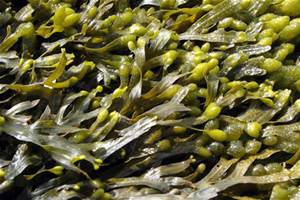It’s always fascinating to look at the wide array of food industry trends that are announced each year and try to understand the public opinion or technology behind those trends that has enabled them or brought them to prominence. Often these trends have been lingering in the background for many years as a niche movement, waiting for the co-incidence of a number of factors that enable them to become a prime consideration. Not surprisingly, the key environmental and sustainability issues are currently at the top of the list of key factors alongside diet and health. Whilst these are not new, they have risen to the surface and are creating synergies which are driving more complex consumer demands.
Sustainable eating.
The EAT-Lancet commission on food recently published the ‘planetary health diet’. This diet targets three goals; weight loss, health and environment. The diet has been devised as part of ‘The EAT-Lancet Commission on Food, Planet, Health’ and defines a healthy and sustainable diet. This diet is non-vegan, acknowledging that certain essential vitamins need to be supplemented for a pure vegan diet, but is a high plant-protein diet. This aligns itself with recent trends in high protein diets to provide satiety, and is also consistent with a move away from high carbohydrate and fat diets, as you would expect from many weight loss strategies. It tries to ensure that the consumers broader health as well as the environment are looked after. This is indicative of a shifting view from the more insular “I want to be healthier. What products are out there to help me achieve my health goals?” to a more outward-looking attitude that has been gaining momentum over the last few years. This attitude consolidates the ideas that have formed separate strands encompassing ideas such as provenance and fair trade, sustainability, transparency and supply chain authenticity. A similar diet is the recently publicised ‘Nordic Diet’ which is 80% Plant: 20% Meat/Dairy; This diet is claimed to boost energy whilst focusing on the use of local produce.
Vegan diets on the rise.
Veganism was previously considered to be a niche regime, followed by only the very committed. The vegan-revolution may have seemed like a fad, but is increasingly being adopted by those who want to reduce their footprint on the planet. Food choices are becoming so much more about how we want to live and interact with our environment; a genuinely more self-less existence for many adopters, that is encompassing cosmetic, household and clothing choices. These represent belief systems of consumers that need to be understood.
What is interesting in the revolution of the vegan market, is that it has blossomed as a result of the ‘meat-reducing’ trends of the last five years or so, supported by the development of technology that has enabled the extraction, purification and de-odourisation of plant proteins. These plant proteins, such as pea, legume and even algae, have been able to satisfy the demands of sustainability & dietary choice, as well as provide essential amino acids which may have previously been difficult to achieve in concentrated formats.
Sustainable supply chains.
‘Horsegate’ seems like a distant memory, but events and incidents such as these act as fixed points in the ‘history of food’ timeline. This is because they have a wide influence on many things that follow and the generation of consumers that they have impacted. Even within the food industry we were shocked at the complexity of that particular supply chain. Fast forward a few years to the shocking exposé on ‘Plant Earth’ of the impact of single use plastics, and again we are horrified. What is apparent is a supply chain that is broken; from the lack of knowledge and integrity in sourcing, to the complete loss of control in life-cycle management and waste disposal.
The next generation of consumers have been made acutely aware of these issues through them being highlighted in such a shocking fashion, and it is only right they will demand better transparency of the supply chain. We should be pleased that the next generations are willing to think past the boundaries of the ‘difficult problems’ in order to make things better. The challenges for delivering what increasingly demanding consumers want are increasing in complexity. They have also been born into a digital age in which they expect data to be at their finger-tips, or at very least to take comfort in the fact that the data is available to them should they wish to seek it, even if they don’t.
It is essential that food and drink business wishing to survive in this future, adapt their business strategies to support the pro-active vision of the next generation. This positive step needs to weave itself into the fabric of everything on our strategic roadmaps. And if you are still particularly mercenary, then just think of it as doing what needs to be done to attract and retain the consumers of tomorrow, because they will be THE market. Do what needs to be done now, to make sure that your brands are still viable in the coming years.
Aurora Ceres® believes that products and technologies should always be judged against its ‘virtuous’ triangle with Product, Health and Environment at each point. Whilst it is said that ‘taste always wins’, that should not be without balancing health and the environmental impact.
This concept of a truly sustainable supply chain should also start to challenge some of the ‘feel good’ beliefs and myths that have existed for many years. For example: Are fair-trade products truly environmentally friendly? Are organic products healthier? Are vegan products healthier even if they are higher in salt? How are processed plant proteins reconciled with ‘minimal processing’ expectations?
These aren’t easy questions to answer and it must be accepted that realistic compromise is the way to achieve success. None of the components that consumers require, such as efficacy, provenance, sustainability, transparency and supply chain authenticity, are new. However, the emphasis on each element has gained greater importance with consumers, and the need to consider all of these components at every decision point in the development, packaging and distribution of a new ingredient or product, is the challenge going forward. As we discussed in a previous article, the development of new food technology and products has a responsibility to deliver against these new strategic objectives and must provide stewardship of the next generation of products for the next generation of consumers.
This article was first published in Food And Drink Technology in March 2019




